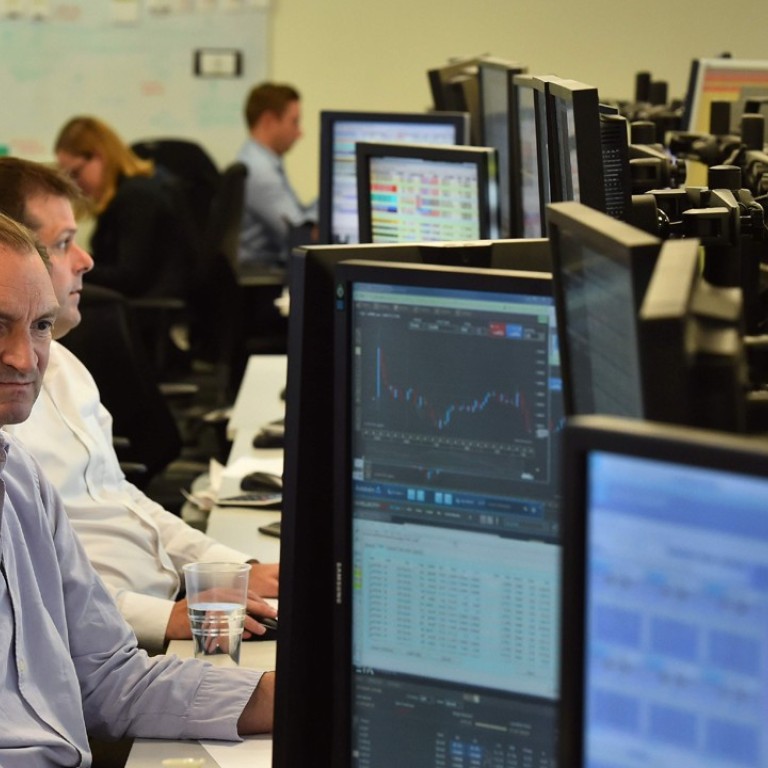
Bears struggle to be taken seriously as markets remain resilient to risks
Another week, another reason for investors to hate what has been dubbed “the most hated bull market in history” a little bit more.
Last Friday Moody’s, the credit rating agency, highlighted the perils of Britain’s decision to leave the European Union by unexpectedly downgrading the UK’s rating, citing a deteriorating outlook for Britain’s public finances and economy. On the same day, North Korea threatened to detonate a hydrogen bomb in the Pacific in response to US president Donald Trump’s threat to “totally destroy” the hermit kingdom if forced to defend his country or its allies.
Two days earlier, the Federal Reserve brushed aside concerns about subdued inflation and announced that it would begin paring back its US$4.5 trillion balance sheet by US$10 billion a month, starting next month, and, more controversially, stick to its plan to raise interest rates four more times by the end of 2018. The more hawkish tone from the Fed in the face of persistently low inflation increases the risk of a “policy mistake” by the Fed which, together with the North Korean crisis, are now the two biggest “tail risks” in markets, according to a fund manager survey by Bank of America Merrill Lynch.
Yet while market bears are feeling more confident in predicting a sharp and sustained correction in asset prices, they are finding it difficult to be taken seriously because of the enduring resilience of markets and their inability to predict when the correction will occur and what the precise trigger will be.
While most investment strategists agree that valuations in bond and equity markets have become stretched, even the more bearish ones admit that they underestimated the momentum behind the rally and, crucially, the insensitivity of international investors to the plethora of political, geopolitical, economic and financial risks hanging over markets.
The bears are on shaky ground for two important reasons.
The first is the persistently low government bond yields in advanced economies which continue to push investors into riskier, and thus higher-yielding, corners of the market.
Even though the Fed is pushing ahead with its plans to remove further stimulus, bond investors remain sceptical of the central bank’s projection of four more rate increases by the end of 2018 in the absence of a marked pickup in inflation. This scepticism is helping keep benchmark Treasury yields anchored at low levels. Just as importantly, there is still nearly US$9 trillion of negative-yielding sovereign debt in Europe and Japan, fuelling the so-called “reach for yield” which accounts for this year’s US$150 billion of inflows into emerging market mutual bond and equity funds – the highest level since 2012.
The second reason – and the one that is making it difficult for the bears to make a compelling case for a major correction – is the remarkable divergence of views on the catalysts for the next financial crisis.
In a seminal piece of research published by Deutsche Bank last week and entitled “The Next Financial Crisis”, the authors list as many as 11 possible triggers for a sharp and disorderly sell-off. These include the unwinding of ultra-loose monetary policies, the risk that central banks have “run out of bullets” to fight the next recession, a major political and financial crisis in Italy, a full-blown debt crisis in China and, crucially, the threat posed by extremely elevated asset prices.

For market bulls, this is reason enough not to head for the exits and instead maintain a degree of exposure to risk assets. Another reason is that most investors continue to believe in a supportive macroeconomic environment because of the combination of low bond yields and a pickup in growth, especially in Europe. According to the fund manager survey, a record number of investors believe in a “Goldilocks” scenario for the global economy – not too hot, not too cold – for the next 12 months.
Still, just because the bears are unsure about when the next crisis will erupt and what will precipitate it does not mean their warnings should be ignored.
It simply means that asset prices are likely to remain dangerously elevated for some time as investors keep betting that the next crisis is still some way off. Provided bond yields remain low, they may well be right.
Nicholas Spiro is a partner at Lauressa Advisory

